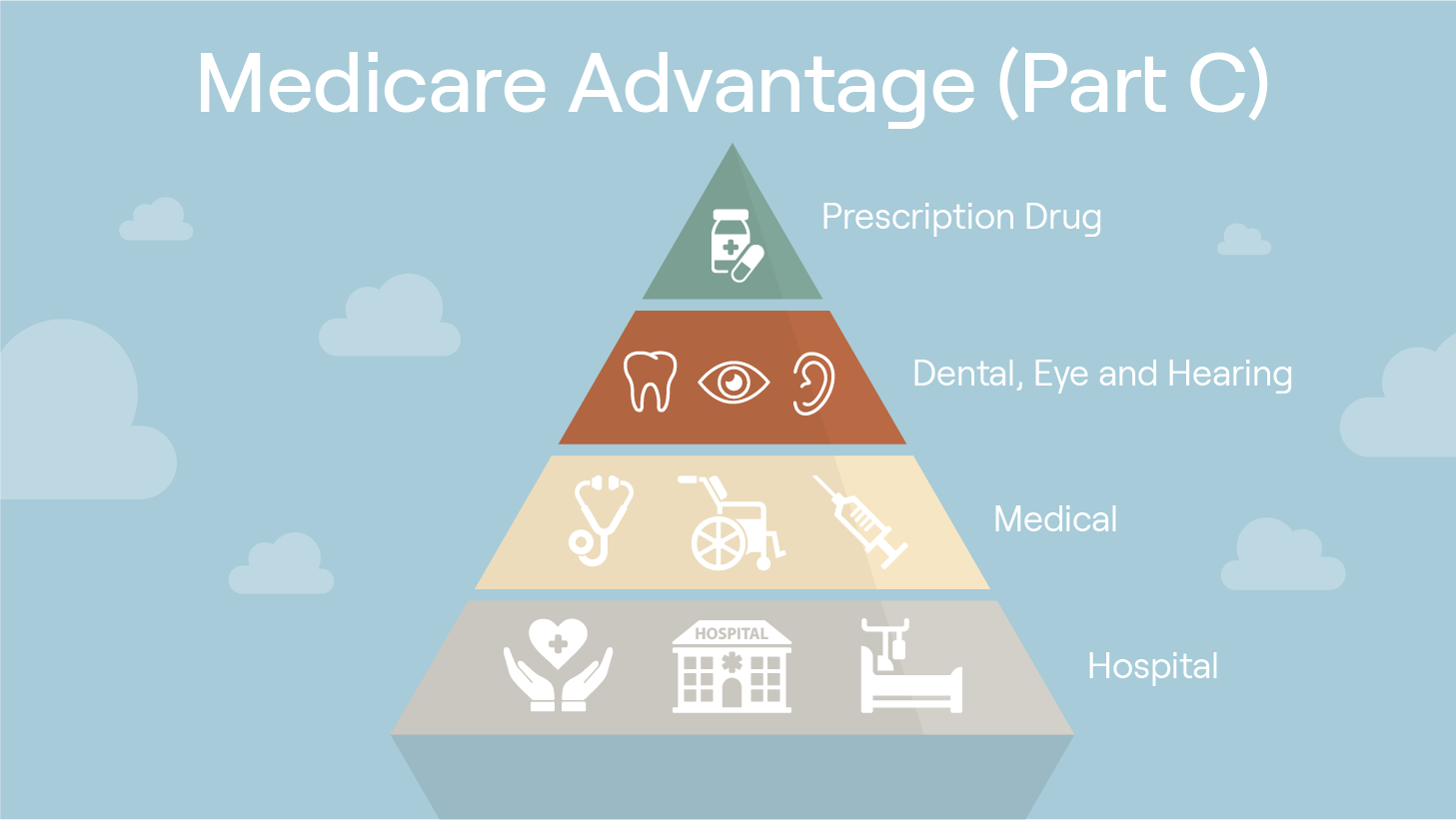How to Navigate the Complexities of Long-Term Care
Understanding the Different Types of Long-Term Care: Exploring the Pros and Cons of In-Home Care, Assisted Living, and Nursing Homes
Long-term care is an important consideration for many individuals and families. It is important to understand the different types of long-term care available and the pros and cons of each option. This article will explore the different types of long-term care, including in-home care, assisted living, and nursing homes, and discuss the advantages and disadvantages of each.
In-home care is a type of long-term care that is provided in the home of the individual receiving care. This type of care can be provided by a family member, friend, or professional caregiver. In-home care can be beneficial for individuals who prefer to remain in their own home and maintain their independence. It can also be more cost-effective than other types of long-term care. However, in-home care can be difficult to arrange and may not be suitable for individuals with more complex needs.
Assisted living is a type of long-term care that is provided in a residential setting. This type of care is designed to provide assistance with activities of daily living, such as bathing, dressing, and meal preparation. Assisted living can be beneficial for individuals who need more assistance than can be provided in their own home, but who do not require the level of care provided in a nursing home. Assisted living can also provide a sense of community and socialization opportunities. However, assisted living can be expensive and may not be suitable for individuals with more complex needs.
Nursing homes are a type of long-term care that is provided in a residential setting. This type of care is designed to provide 24-hour medical and personal care for individuals who require more intensive care. Nursing homes can be beneficial for individuals who need more intensive care than can be provided in their own home or in an assisted living facility. However, nursing homes can be expensive and may not be suitable for individuals who prefer to remain in their own home.
In conclusion, there are a variety of long-term care options available, each with its own advantages and disadvantages. It is important to consider the individual needs of the person receiving care when deciding which type of long-term care is best. In-home care, assisted living, and nursing homes all have their own unique benefits and drawbacks, and it is important to weigh these carefully when making a decision.
Planning Ahead: How to Create a Long-Term Care Plan That Works for You
Creating a long-term care plan is an important step in ensuring that you and your loved ones are prepared for the future. A long-term care plan can help you plan for the care you may need as you age, as well as provide financial security for your family. Here are some tips to help you create a long-term care plan that works for you.
1. Assess Your Needs: Before you can create a long-term care plan, you need to assess your current and future needs. Consider your current health, lifestyle, and financial situation. Think about what kind of care you may need in the future, such as home health care, assisted living, or nursing home care.
2. Research Your Options: Once you have assessed your needs, it’s time to research your options. Look into long-term care insurance, government programs, and other resources that may be available to you. Consider the costs and benefits of each option and decide which one is best for you.
3. Create a Budget: Creating a budget is an important part of any long-term care plan. Make sure to include all of your expected expenses, such as medical bills, insurance premiums, and other costs associated with long-term care.
4. Talk to Your Family: Discuss your long-term care plan with your family. Make sure they understand your wishes and are prepared to help you if needed.
5. Seek Professional Advice: It’s a good idea to seek professional advice when creating a long-term care plan. An experienced financial advisor or elder law attorney can help you create a plan that meets your needs and fits within your budget.
Creating a long-term care plan can be a daunting task, but it’s an important step in ensuring that you and your loved ones are prepared for the future. By following these tips, you can create a plan that works for you and provides financial security for your family.
Financing Long-Term Care: Exploring Your Options for Covering the Costs
Financing long-term care can be a daunting task. With the cost of care rising, it is important to explore all of your options for covering the costs. This article will provide an overview of the various ways to finance long-term care, including private insurance, government programs, and other sources of funding.
Private Insurance
Private insurance is one of the most common ways to finance long-term care. Many insurance companies offer long-term care policies that can help cover the costs of care. These policies typically cover a range of services, including home health care, assisted living, and nursing home care. The cost of these policies varies depending on the type of coverage and the age of the policyholder.
Government Programs
The federal government offers several programs to help cover the costs of long-term care. These include Medicaid, which provides health care coverage for low-income individuals, and Medicare, which provides coverage for seniors and people with disabilities. Additionally, some states offer programs that provide financial assistance for long-term care.
Other Sources of Funding
In addition to private insurance and government programs, there are other sources of funding that can help cover the costs of long-term care. These include long-term care savings accounts, reverse mortgages, and veterans’ benefits. Additionally, some employers offer long-term care insurance as part of their benefits package.
Conclusion
Financing long-term care can be a complex and overwhelming process. It is important to explore all of your options for covering the costs. Private insurance, government programs, and other sources of funding can all help to cover the costs of long-term care. With careful planning and research, you can find the best option for your situation.
Navigating the Legal Aspects of Long-Term Care: What You Need to Know
Navigating the legal aspects of long-term care can be a daunting task. It is important to understand the various laws and regulations that govern long-term care in order to ensure that you and your loved ones are receiving the best possible care. This article will provide an overview of the legal aspects of long-term care, including the rights of residents, the responsibilities of providers, and the various types of long-term care insurance.
Residents of long-term care facilities have certain rights that must be respected. These include the right to privacy, the right to be free from abuse and neglect, the right to make decisions about their own care, and the right to access their medical records. Residents also have the right to be informed about their rights and to receive information about the services and care they are receiving.
Providers of long-term care have certain responsibilities as well. They must provide quality care that meets the needs of the residents, ensure that the facility is safe and secure, and provide information about the services and care they are providing. Providers must also comply with all applicable laws and regulations.
Long-term care insurance is an important part of planning for long-term care. It can help cover the costs of care, including nursing home care, home health care, and assisted living. There are several types of long-term care insurance, including traditional long-term care insurance, hybrid long-term care insurance, and Medicaid-funded long-term care insurance. It is important to understand the differences between these types of insurance and to choose the one that best meets your needs.
Navigating the legal aspects of long-term care can be a complex process. It is important to understand the rights of residents, the responsibilities of providers, and the various types of long-term care insurance. By taking the time to understand these aspects of long-term care, you can ensure that you and your loved ones are receiving the best possible care.
Making the Most of Your Long-Term Care Experience: Tips for Staying Positive and Engaged
Long-term care can be a difficult experience, but it doesn’t have to be. With the right attitude and a few tips, you can make the most of your long-term care experience and stay positive and engaged.
1. Stay Connected: Staying connected with family and friends is essential for staying positive and engaged. Make sure to keep in touch with your loved ones, whether it’s through phone calls, video chats, or even just writing letters.
2. Get Involved: Participating in activities and events at your long-term care facility can help you stay engaged and connected to your community. Ask your care team about any activities or events that you can join.
3. Take Care of Yourself: Taking care of yourself is important for staying positive and engaged. Make sure to get enough rest, eat healthy meals, and exercise regularly.
4. Find a Hobby: Finding a hobby or activity that you enjoy can help you stay positive and engaged. Whether it’s reading, writing, painting, or playing an instrument, having something to look forward to can make a big difference.
5. Stay Positive: It’s easy to get discouraged in long-term care, but it’s important to stay positive. Focus on the things that you can do, rather than the things that you can’t.
By following these tips, you can make the most of your long-term care experience and stay positive and engaged. With the right attitude and a few simple steps, you can make the most of your time in long-term care.
Finding the Right Caregiver: How to Choose the Right Person for Your Needs
Finding the right caregiver for your needs can be a daunting task. It is important to take the time to find the right person who can provide the care and support you need. Here are some tips to help you choose the right caregiver for your needs.
1. Determine Your Needs: Before you start your search for a caregiver, it is important to determine your needs. Consider the type of care you need, the hours you need care, and any special skills or qualifications you may require.
2. Research Caregiver Options: Once you have determined your needs, it is time to research your options. Consider the different types of caregivers available, such as home health aides, certified nursing assistants, and companions. Research the qualifications and experience of each type of caregiver to ensure they are qualified to provide the care you need.
3. Ask for Referrals: Ask family, friends, and healthcare providers for referrals to caregivers they have used or know of. This can help you narrow down your search and find a caregiver who is a good fit for your needs.
4. Interview Potential Caregivers: Once you have identified potential caregivers, it is important to interview them. Ask questions about their experience, qualifications, and availability. Make sure to ask about their communication style and how they handle difficult situations.
5. Check References: Before making a final decision, it is important to check references. Ask for references from previous employers and clients. This will help you get a better understanding of the caregiver’s work ethic and experience.
Finding the right caregiver for your needs can be a challenging process. However, by taking the time to research your options, ask for referrals, interview potential caregivers, and check references, you can find the right person for your needs.
Staying Connected: How to Maintain Relationships During Long-Term Care
As the world continues to grapple with the effects of the COVID-19 pandemic, many people are facing the prospect of long-term care. Whether it’s due to illness, injury, or other circumstances, long-term care can be a difficult and isolating experience. It’s important to stay connected with family and friends during this time, but it can be difficult to do so when you’re unable to physically be together. Here are some tips for maintaining relationships during long-term care.
1. Utilize Technology: Technology can be a great way to stay connected with loved ones. Video chat services like Skype, FaceTime, and Zoom are great for having face-to-face conversations with family and friends. Social media platforms like Facebook, Twitter, and Instagram can also be used to stay in touch.
2. Send Letters and Cards: Writing letters and cards is a great way to stay connected with loved ones. It’s a personal way to let them know you’re thinking of them and to share your thoughts and feelings.
3. Make Phone Calls: Phone calls are a great way to stay connected with loved ones. It’s a great way to have a conversation and catch up on what’s going on in each other’s lives.
4. Plan Virtual Gatherings: Virtual gatherings are a great way to stay connected with family and friends. You can plan a virtual dinner party, game night, or movie night.
5. Send Care Packages: Sending care packages is a great way to show your loved ones that you’re thinking of them. You can include items like books, magazines, snacks, and other items that will make them feel special.
Long-term care can be a difficult and isolating experience, but it’s important to stay connected with family and friends. Utilizing technology, sending letters and cards, making phone calls, planning virtual gatherings, and sending care packages are all great ways to maintain relationships during long-term care.
Managing Stress and Anxiety: Tips for Coping with the Challenges of Long-Term Care
Long-term care can be a stressful and anxiety-inducing experience for both the patient and their family. It is important to recognize the signs of stress and anxiety and to take steps to manage them. Here are some tips for coping with the challenges of long-term care:
1. Take Care of Yourself: Make sure to take time for yourself and to practice self-care. This could include activities such as yoga, meditation, or simply taking a walk.
2. Reach Out for Support: Don’t be afraid to reach out to family and friends for support. Talking to someone who understands can be a great way to relieve stress and anxiety.
3. Stay Connected: Make sure to stay connected with your loved one in long-term care. This could include sending cards, making phone calls, or visiting when possible.
4. Get Organized: Create a plan for managing the care of your loved one. This could include making lists of tasks, setting reminders, and delegating tasks to other family members.
5. Seek Professional Help: If you are feeling overwhelmed, don’t hesitate to seek professional help. There are many resources available to help you manage stress and anxiety.
By following these tips, you can help manage the stress and anxiety associated with long-term care. Remember to take care of yourself and to reach out for support when needed.
Exploring Alternative Options: Investigating Non-Traditional Long-Term Care Solutions
As the population ages, the need for long-term care solutions is becoming increasingly important. Traditional long-term care options, such as nursing homes and assisted living facilities, are often expensive and may not be the best fit for everyone. Fortunately, there are a variety of non-traditional long-term care solutions available that can provide the care and support needed while allowing individuals to remain in their own homes or in other community settings.
One option is adult day care centers. These centers provide a safe and supportive environment for seniors during the day, allowing them to socialize and participate in activities while receiving assistance with daily tasks such as bathing, dressing, and medication management. Adult day care centers also provide respite for family caregivers, allowing them to take a break from their caregiving duties.
Another option is home health care. Home health care services provide skilled nursing care and assistance with activities of daily living in the comfort of the individual’s home. Home health care services can be provided on a part-time or full-time basis, depending on the individual’s needs.
In-home care services are also available. These services provide assistance with activities of daily living, such as bathing, dressing, and meal preparation, as well as companionship and transportation. In-home care services can be provided on a part-time or full-time basis, depending on the individual’s needs.
Finally, there are a variety of community-based services available to seniors. These services can include transportation, meals, and social activities. Community-based services can help seniors remain independent and connected to their community.
Non-traditional long-term care solutions can provide the care and support needed while allowing individuals to remain in their own homes or in other community settings. It is important to explore all available options to determine which solution is best for the individual’s needs.
Preparing for the Future: How to Plan for Your Long-Term Care Needs
As you age, it is important to plan for your long-term care needs. Long-term care is a range of services and supports that you may need to meet your personal care needs over an extended period of time. Planning ahead can help you ensure that you have the resources and support you need to remain independent and comfortable in your later years.
The first step in planning for your long-term care needs is to assess your current situation. Consider your health, lifestyle, and financial resources. Think about what type of care you may need in the future and how you will pay for it.
Once you have assessed your current situation, you can begin to plan for your long-term care needs. Start by researching the different types of long-term care services available in your area. Consider the cost of each type of care and how it fits into your budget.
You may also want to consider purchasing long-term care insurance. This type of insurance can help cover the cost of long-term care services, such as home health care, assisted living, and nursing home care. Be sure to research different policies and compare costs before making a decision.
It is also important to create an advance directive. An advance directive is a legal document that outlines your wishes for medical care in the event that you are unable to make decisions for yourself. This document should include information about your preferences for medical treatments, end-of-life care, and other important decisions.
Finally, it is important to discuss your long-term care plans with your family and friends. Make sure they understand your wishes and are prepared to help you if needed.
Planning for your long-term care needs can be a daunting task. However, taking the time to assess your current situation, research your options, and discuss your plans with your family and friends can help ensure that you have the resources and support you need to remain independent and comfortable in your later years.
Conclusion
Navigating the complexities of long-term care can be a daunting task, but with the right information and resources, it can be done. It is important to understand the different types of long-term care, the costs associated with them, and the various options available. Additionally, it is important to research and compare different providers to ensure that the best care is being provided. With the right knowledge and resources, navigating the complexities of long-term care can be a manageable process.
Benefits of Medicare Advantage for Veterans
Veterans and Medicare Advantage plans represent a crucial intersection of health- care services designed to enhance the medical coverage available…
10 Essential Insurance Tips to Protect Your Future
1. Assess your insurance needs based on income, assets, and dependencies. 2. Understand policy types: life, health, auto, home, and…
ACA 2025 Open Enrollment
The ACA 2025 Open Enrollment Period represents a pivotal opportunity for individuals and families to obtain health insurance coverage under…
Medicare Annual Enrollment Period 2025
The Medicare Annual Enrollment Period (AEP) for 2025 is a critical time for beneficiaries to review and adjust their Medicare coverage, running…
Medicare Advantage and the Nearing Annual Election Period
Medicare Advantage and the Nearing Annual Election Period Introduction Navigating Medicare can feel like trying to read a map written in a…
Understanding Medicare Advantage Plans
Understanding Medicare Advantage Plans Medicare Advantage plans have become a popular alternative for people who want more flexibility and comprehensive coverage…












